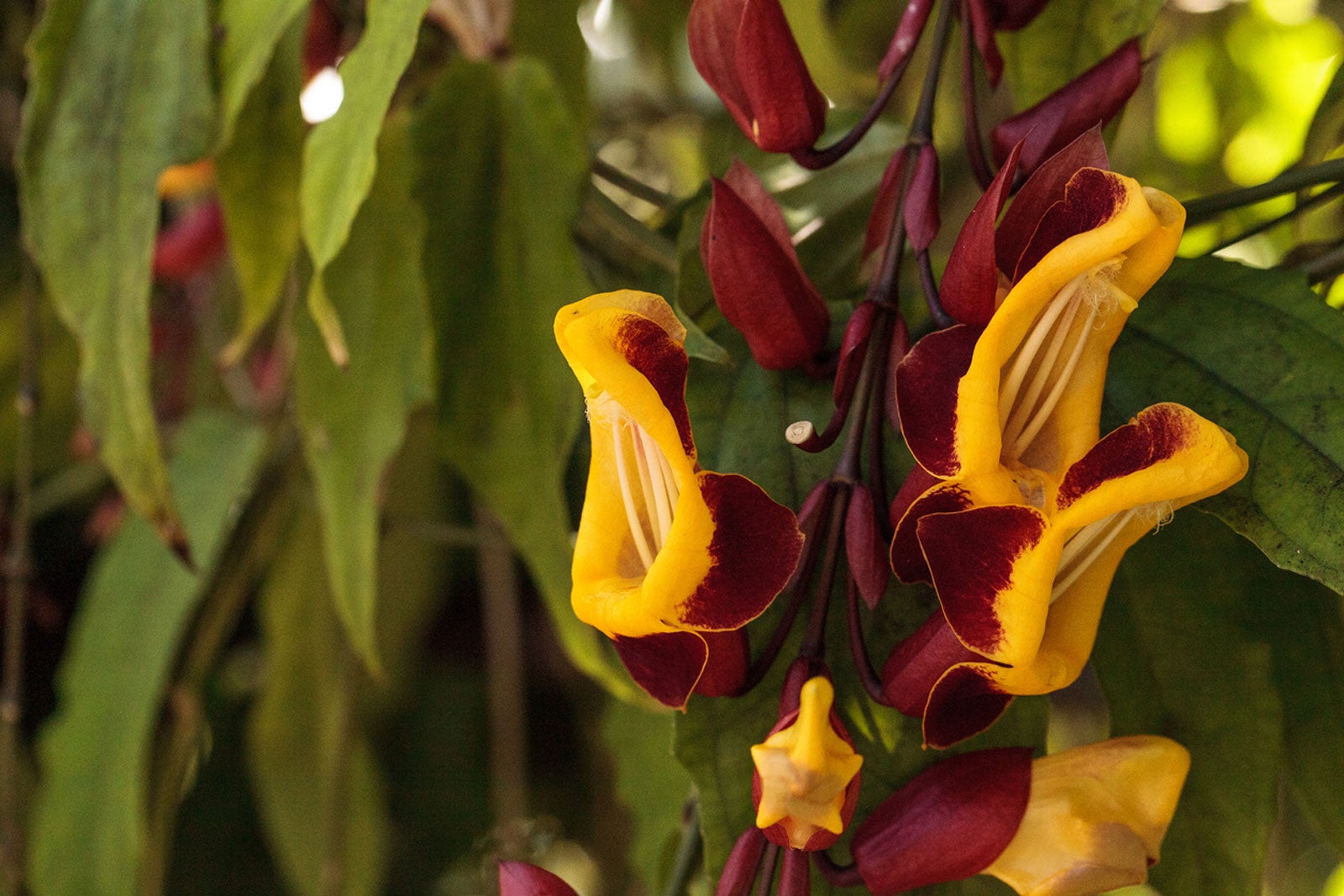Indian Clock Vine Plant Info – Learn How To Grow Indian Clock Vines


The Indian clock vine plant is native to India, specifically areas of tropical mountain ranges. This means it isn’t easy to grow in climates that are too cold or dry, but it does make a lovely, flowering evergreen vine in warm, tropical areas.
Indian Clock Vine Plant Info
Indian clock vine, Thunbergia mysorensis, is a flowering evergreen vine found in India. If you have the right conditions to grow it, this vine is a stunner. It can grow up to 20 feet (6 m.) long and produces flower clusters up to 3 feet (1 m.) long. The flowers are red and yellow and attract hummingbirds as well as other pollinators.
The Indian clock vine needs something sturdy to climb and looks especially nice growing on a pergola or arbor. If set to grow so the flowers hang down, you will have visually stunning pendants of bright flowers.
Since its native to southern forests of India, this is not a plant for colder climates. In the U.S., it does well in zones 10 and 11, which means you can easily grow it outdoors in southern Florida and Hawaii. Indian clock vine can tolerate some colder temperatures for short periods but in cold climates, growing it indoors in a container is a more likely option and possible to do.
How to Grow Indian Clock Vines
With the right climate, Indian clock vine care is simple. It needs only average soil that drains well, regular watering, a spot that is sunny to partially shady, and something to climb. Higher humidity is ideal, so if growing indoors, use a humidity tray or spritz your vine regularly.
You can prune Indian clock vine after it has bloomed. Outdoors, pruning can be done to simply keep shape or control the size as needed. Indoors, this fast-growing vine can quickly get out of control, so pruning is more important.
The most common pest of Indian clock is the spider mite. Look for them on the undersides of leaves, although you may need a magnifying glass to spot these pests. Neem oil is an effective treatment.
Sign up for the Gardening Know How newsletter today and receive a free copy of our e-book "How to Grow Delicious Tomatoes".
Indian clock vine propagation can be done by seed or cuttings. To take cuttings, remove sections of stem that are about 4 inches (10 cm.) long. Take the cuttings in spring or early summer. Use a rooting hormone and place the cuttings in soil mixed with compost. Keep the cuttings warm.

Mary Ellen Ellis has been gardening for over 20 years. With degrees in Chemistry and Biology, Mary Ellen's specialties are flowers, native plants, and herbs.